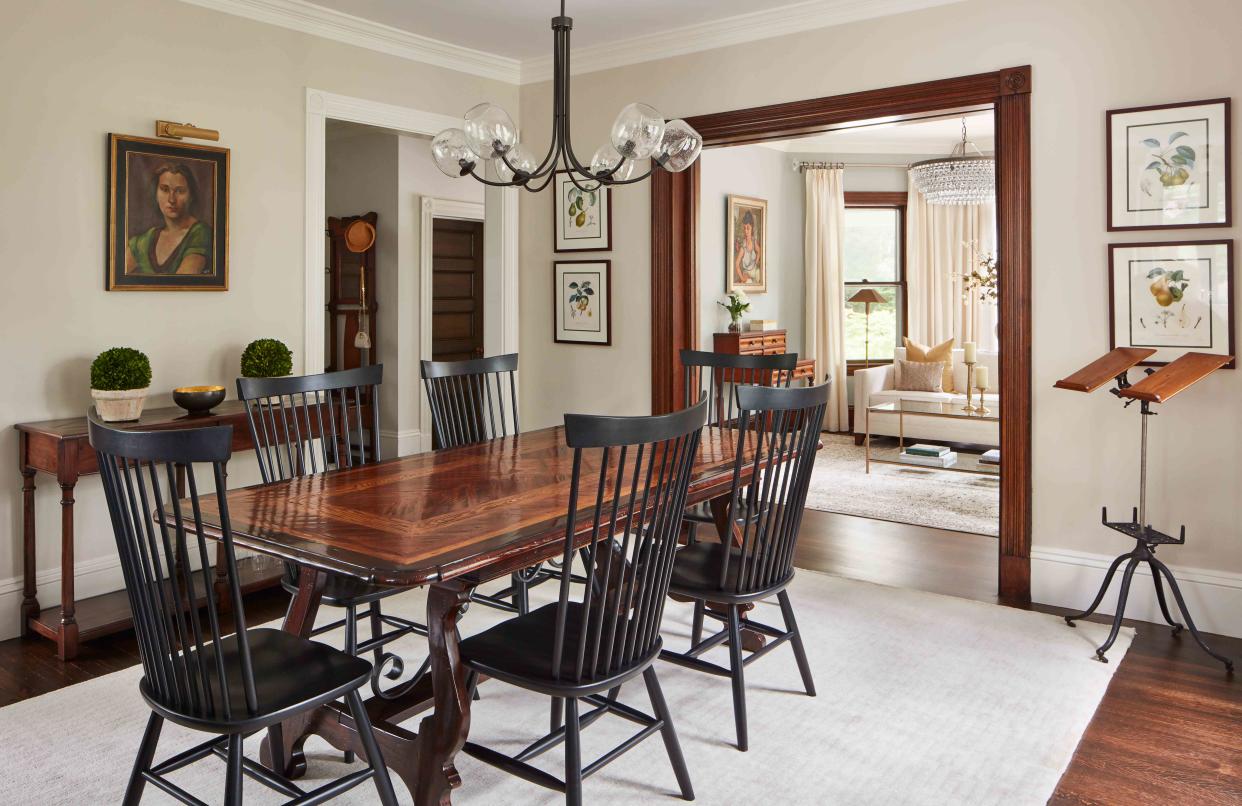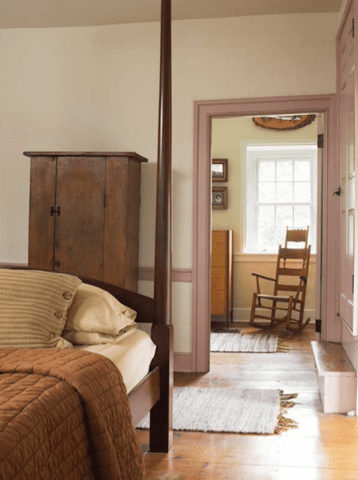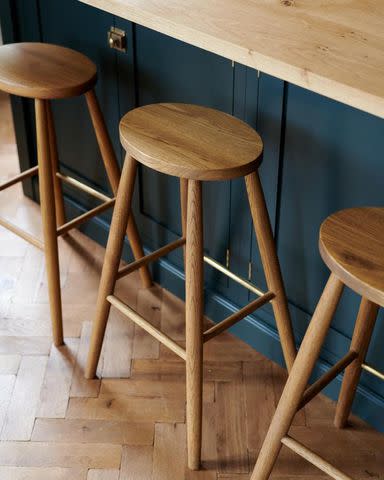What Is a Shaker-Style House?

- Oops!Something went wrong.Please try again later.
When the religious movement known as the Shakers, a branch of Quakerism, landed in the United States in the 1780s, they brought their simple and sparse design aesthetic—which went hand-in-hand with their beliefs—with them. Therefore, Shaker-style houses are considered no-frills homes prioritizing order, neatness, and craftsmanship, which are often seen through white walls and clean-lined furniture that they made themselves.
What is a Shaker-Style House?
The Shaker style of architecture, furniture, and home design can be characterized by simplicity, utility, and classic craftsmanship. Shakers valued order and tidiness, which is why homes of this era embraced clean lines and lack of ornamentation.
Overview
Shakers were present in the United States throughout the 18th and 19th centuries, and were renowned, both then and now, as craftspeople who prioritized function over adornment. “This devotion to craft and simplicity resulted in interiors that paved the way for modern design in the next century,” says interior designer Bethany Adams.
Their commitment to leading simple lives led to design approaches that feel just as fresh and modern today. Think: clean lines and unrivaled craftsmanship, white walls and practical peg molding, built-in cupboards and wooden furniture.
“Though a Shaker-style home could be seen as just a fashionable trend, it is actually a philosophical approach to life,” Ana Maria Torres, founder and principal of New York City-based at architects, tells us.
While there are few Shaker communities remaining, their restrained design principles are as relevant as ever. "A Shaker-style home is perfect for the person who appreciates both modern and historic design and who doesn't like a lot of clutter,” Adams says.

The History of Shaker-Styles Houses
“Do all your work as though you had a thousand years to live and as you would if you knew you must die tomorrow," a quote often attributed to Mother Ann Lee, a Shaker religious leader, succinctly summarizes the beliefs and lifestyles of the Shakers, who landed in America in the 1780s, bringing their religious movement and utilitarian design style to New England and beyond.
There’s a long history to Shaker-style houses, which dates back to the late 18th century when the Shakers settled in communities throughout New England. “Shaker philosophy advocated for a new way of thinking—new, alternative types of family relationships, a new economic system, a new relationship between divinity and humanity,” Torres says. “It was a cultural system that challenged Western society in all its aspects.”
Shakers also broke with tradition in regard to art and architecture, too. “They developed a new architectural typology that responded to their communal lifestyle,” Torres says.
Shakers held work as sacred, and it was done to the utmost skill level and energy of the worker. Their strive for self-sufficiency equated to making all of their everyday objects and furniture—but no trinkets allowed. They did not believe in superfluous decoration, so each object had to be functional.
Shakers’ style was in stark contrast to my ornate homes of the time. “All Shaker-style interior design exemplified simplicity and spareness, the opposite of most homes of that period, which were dense and overstuffed with furniture, lace, and brocaded curtains,” says Torres. “Nowadays the Shakers’ simple forms are highly appreciated.”
Though the Civil War and the shift of the American economy from farming to industrialization caused their population to decline, the Shakers’ philosophy remains oh-so relevant. “This approach enjoins us to see value and beauty in every object of the home, from the most minimal utilitarian object to the main staircase of the house," Torres says. Will they last a thousand years, like Lee predicted? Time will tell, but all signs point to yes.

What Makes a House Shaker-Style?
Depending on where they settled, Shaker communities adapted their homes’ architecture to accommodate their environment. “In New England, where light and warmth are elusive, they developed new architectural designs and technologies to maximize the light,” Torres says. That included skylights and concentrating windows in the southern and northern facades without undermining structural integrity.
The majority of Shaker homes are built in a classic New England wooden clapboard saltbox style, with two stories in the front and one in the rear, but not all. Adams notes that in her native Kentucky there are a few impressive Style-style stone and brick buildings too, like the ones at Shaker Village of Pleasant Hill. “Though the exteriors of Shaker homes are not uniform in style, the interiors are categorized by the beauty of simplicity and function that are hallmarks of the Shakers,” says Adams. Every element had to be functional.
Here are the common features of a Shaker-style house.
Exterior:
Framed in wood timbers
Shiplap siding, often painted white
Saltbox style
Others, meanwhile, were constructed out of brick and limestone
Interior:
White walls
Colorful trim
Peg molding
Wide wooden planked floors
Bricks in utility spaces
High ceilings
Built-in cupboards and storage units
No clutter
Dual staircases and entrances, as interiors were often divided into identical halves, with women living on one side and men on the other
To get the look in your own home, no matter its exterior style, Adams suggests painting your walls a matte white and trim a muted green or blue. Keep furnishings and adornments minimal, focusing on bringing only hand-crafted, functional pieces (like bentwood boxes or baskets) into your home.
A Shaker-style home is ultimately defined by the intentional lifestyle developed by an appreciation for natural materials and efficient design. “After we are clear on these priorities, it’s easier to implement Shaker design in our spaces,” says Torres.
Up Next: What Is a Ranch-Style House? Here's Everything You Need to Know

